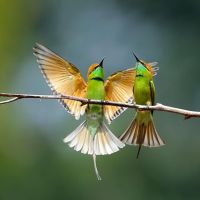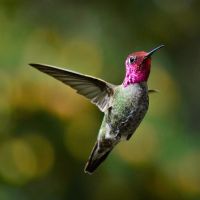Wildlife photography is a saturated market, and finding effective sales channels can be difficult. However, it is still possible to make a living from your wildlife photography, whether you’re a full-time professional photographer or looking to make some extra money. By finding the right sales opportunities and strategies you can stand out and be competitive in a dense online market – especially if you adopt a diverse sales strategy to make the most of the various opportunities that exist in the industry.
In this article, we will set out some of the best channels and opportunities to make money for wildlife or nature photographers, so you can consider and adopt new sales methods that work for you. We will also look at some key strategies for getting your work in front of potential buyers, and how to market and price your photography, underpinning the success of your sales.
Maximize your revenue and build your professional wildlife photography business career using this guide!
Publications: Magazines, Book Publishers, Calendars, Advertising Firms
Publications are an obvious first place to look to sell wildlife photography. This ranges from more well-known publications, such as magazines like National Geographic, to more surprising avenues such as calendars. There are a lot of both virtual and physical publications that make use of wildlife, nature, or even landscape photography in their work, and this can be a great target audience to sell to. However, you should also expect intense competition here, so having a strong portfolio is crucial.

To start selling your images to publications, you would first need to research and contact possible target publications. Selection processes will vary across publications but may involve submitting samples or proposals. So after crafting a concise, compelling pitch highlighting why your photos are a good fit, you would need to showcase a high-quality, diverse portfolio.
Publications typically seek stunning, unique wildlife images that tell a story and align with their style and audience. BBC Wildlife, for example, says that they will consider relevant individual images or photo stories.

Different magazines will also have their own submission guidelines, both for the type of content for which they’re looking and the image and submission specifications. A top priority for National Wildlife is that the welfare of wildlife is taken into consideration by photographers. One of their requirements, therefore, is that photographers disclose the conditions under which photos were taken.
So in order to get published, you will need to look up submission guidelines for each publication and follow them. Over time, a network of contacts can be built that will facilitate this process. And we should note that submissions can also be done indirectly through a stock photo agency, which is especially common for advertising firms. We’ll discuss selling to a stock agency in the following section.
Rights-Managed Licensing
When selling photographs to publications, bear in mind that there are different contract models. One common licensing method is rights-managed licensing, which is a model used in the photography industry to control the usage rights of an image.
Under this model, photographers or copyright holders retain control over how their images are used, allowing them to specify the terms and conditions of usage for buyers. Some buyers will want exclusive rights to your photograph, others will want a time-limited exclusive right, and others may be more flexible.
This means that photographers have some degree of protection for their intellectual property rights, as they have a say in how their images are used. It also allows for specification of how long images are used for, and where they may be used.
Consequently, this model allows photographers to customize pricing based on the intended use, so it can be a valuable way of ensuring that your photography is used for the purposes you want it to be used for. However, the more restrictions imposed, the lower the price will likely be.
Sell to Stock Image Agencies
Selling your photographs to stock image agencies is another viable option to make money from wildlife photography. Instead of purchasing from photographers directly, a large part of the market moves through stock agencies. These agencies purchase an image from a photographer, which in turn is then licensed or purchased from a stock agency by a publication firm.
Each stock photography site will have different requirements, so you will need to do a bit of research here. One such requirement would be that images are of a high quality, and meet set standards. But essentially, if your photos meet the necessary specifications, you can upload them, add tags, and then market your portfolio to start selling. Your potential earnings will depend on a number of factors, such as the quality and popularity of your images, or the volume of images that you sell.
A number of photographers are reluctant to work with stock agencies, feeling that they negotiate one-sided contracts from a position of power and devalue the work of photographers. It is therefore important to ensure you are always choosing the right place to sell your images online, and are working with stock agencies that value your work and adhere to industry standards.

Some popular options include Nature Picture Library and Minden Pictures. Both of these agencies tend to be open to rights-managed licensing. In contrast, other agencies such as Adobe Stock or Shutterstock seem to prefer royalty-free licensing.
Considerations Around Royalty-Free Contracts
The reason some photographers do not want to use stock agencies is precisely because of royalty-free licensing. With a royalty-free license, the buyer pays a one-time fee for the photograph and then can use it in whatever way they want.
On the one hand, this benefits the buyer as they can then sell the image to a number of purchasers at a higher price thanks to their connections and scale. However, it is not entirely one-sided; with royalty-free licensing the photographer is also free to sell their photograph to as many purchasers as they want.
Certain photos may be more suited to royalty-free licensing. At the very least, if you have what you believe to be a truly valuable photo, it seems it may be best to pursue other contract types.
Participate in Photo Competitions
Participating in photo competitions presents a different opportunity for promoting your work, while possibly monetizing your passion. Not only can this lead to direct revenue, but it could also help build your reputation and get your name out there, which can in turn help with capitalizing on other opportunities.
As with submitting photos for publication, finding relevant photo competitions will require a bit of research, and will depend on your content and the submission guidelines. You can start by researching reputable photography websites, magazines, and organizations that focus on wildlife conservation or nature photography. Follow their social media accounts and subscribe to newsletters to stay updated on upcoming contests and calls for submissions. Joining online photography communities and forums can also provide valuable insights and recommendations from fellow photographers about upcoming competitions and best practices for submitting entries.
When an opportunity presents itself, review the competition guidelines and submission requirements to ensure your entries meet the criteria. Some popular general photo competitions include:
- Natural History Museum’s Wildlife Photographer of the Year
- BBC Wildlife’s Photo Club Competition
- National Wildlife Photo Contest
- The Comedy Wildlife Photography Awards

Offer Online Workshops
There is a surprising amount of people interested in photography workshops and learning more about the process of wildlife photography. Offering classes that show off your unique perspective and experience can be a valuable income opportunity, but it does require you to have a strong portfolio to help sell your workshop.
Starting an online wildlife or nature photography workshop involves several key steps. Begin by designing a comprehensive course that covers essential photography techniques for wildlife photography, and post-processing skills. Next, set up a user-friendly platform for hosting the workshop, ensuring easy access to course materials and interactive elements like forums or live Q&A sessions.
Having a strong online presence, such as through a dedicated website and social media is crucial for marketing the workshop. You can use compelling visuals and engaging content to attract potential participants. As the workshop progresses, look at building a supportive community. Continuous engagement with participants and regular updates to course content can help maintain interest and ensure the success of your workshop.
Create a Photography Website
While the above strategies can help build your brand as a wildlife photographer, it is also important to have a professional photography website. We’ve mentioned throughout this article that it’s important to have a strong portfolio and having your own website is one way you can achieve this, and so linking your website becomes part of the strategy you utilize to make connections with publications and agencies. However, it’s also important as you can use it as a hub for selling wildlife photography directly to customers, making sure you’re in full autonomy of monetization around your work.
“Utilizing your own website to sell wildlife photography provides direct control over your brand, portfolio presentation, and pricing strategy,” says Content Manager Tam Vincent. “It eliminates the need for external publishers, empowering photographers to establish a unique online presence, retain a higher percentage of sales, and build a direct relationship with their audience, fostering trust and credibility.”
When creating your website, WordPress provides a user-friendly solution. This, along with the use of plugins to support the creation of a website, ensures a professional and aesthetic finish. Plus, with the use of plugins to boost site performance and SEO, you can gain a competitive edge over your competitors.
FooGallery is an excellent solution, as it is a user-friendly, reliable but highly customizable plugin with a rich set of features for creating a strong photography website.
- It offers a wide range of gallery templates, for diverse ways to display your photos, all of which are customizable for a personal touch or ready to use as-is.
- It has a number of enhancing features, such as hover effects to make your images stand out, and filtering for better navigation.
- It has advanced technical features, such as SEO to improve visibility and lazy loading to improve website speed.

FooGallery offers a number of different plans for different media gallery needs. The different levels of paid plans include the PRO Starter advanced customizations and gallery layouts, and the PRO Expert plan for a more advanced feature set, such as video, pagination, and dynamic galleries. If you want to sell your wildlife photography from your WordPress website, however, FooGallery PRO Commerce is the best option.
The Best WordPress Gallery Plugin
FooGallery is an easy-to-use WordPress gallery plugin, with stunning gallery layouts and a focus on speed and SEO.
Sell Your Photography Directly Through WooCommerce
To make the most of your website, we recommend using the FooGallery PRO Commerce plan, which will allow you to integrate your site with WooCommerce, one of the biggest ecommerce platforms available. With these two plugins, you can set up your photographs as products in WooCommerce and use these to create product galleries with FooGallery. This gives your users a chance to not only browse through your images but to purchase them as well.

Beyond its WooCommerce integration, FooGallery PRO Commerce comes with valuable image protection features that will be crucial for directly selling your images online. These include watermarks and right-click image protection settings that will allow you to display your images online for sales and marketing purposes, without fear of them being stolen.
This provides a great direct sales opportunity on WooCommerce, as well as creating a strong foundation for you to display your photography online to build your visibility and name, helping get your work in front of potential buyers.
Images courtesy of Pixabay
The Best WordPress Gallery Plugin
FooGallery is an easy-to-use WordPress gallery plugin, with stunning gallery layouts and a focus on speed and SEO.
Pricing Your Photography
Throughout this guide, different contract models have been explored as they are most relevant to the type of sale channel. Different models, such as licensing (rights-managed or royalty-free) and print sales, offer varying levels of control and revenue potential. Rights-managed licensing allows photographers to negotiate usage terms and command higher prices, while royalty-free licensing offers broader usage rights at a lower cost. So you’ll need to choose the model that works for you.
However, it is also useful to explore a broader picture of how to price your photography, as this is an essential part of successfully selling your work. Understanding the market value of your wildlife photography is an important part of effectively pricing your work to maximize revenue. Resources like researching prices of similar photos sold online and consulting with fellow photographers can provide valuable insights into market trends.
When setting pricing structures for different formats and mediums, photographers should consider factors like the uniqueness of the image, production costs, and the perceived value to customers. Balancing competitive prices with profitability also means being aware of overhead costs, such as equipment, travel, and marketing expenses, to ensure a favorable profit margin while remaining competitive in the market.
Maximize Your Online Sales Through Diverse Sales Opportunities
Whether you’re a professional wildlife photographer, or a hobbyist looking to earn a passive income, you’ll know that it is difficult to stand out and find sales opportunities in the saturated market for wildlife photography. However, with the right knowledge, it is possible to find diverse monetization opportunities and sales channels to successfully sell your images.
This guide has set out many strategies and opportunities for selling your photography, but we should stress the importance of having your own website to showcase your work. This needs to be an appealing and professional-looking website that effectively displays your photography. This will not only provide a revenue opportunity in itself (without the need to pay commissions to a third party), but also will underpin all your other efforts by allowing you to build a name for yourself in searches, and showcase a strong portfolio to potential clients.
Start exploring which of these sales opportunities are best suited to you! And don’t forget to check out FooGallery as an excellent solution for creating a photography website as the foundation of your wildlife photography sales.
The Best WordPress Gallery Plugin
FooGallery is an easy-to-use WordPress gallery plugin, with stunning gallery layouts and a focus on speed and SEO.





